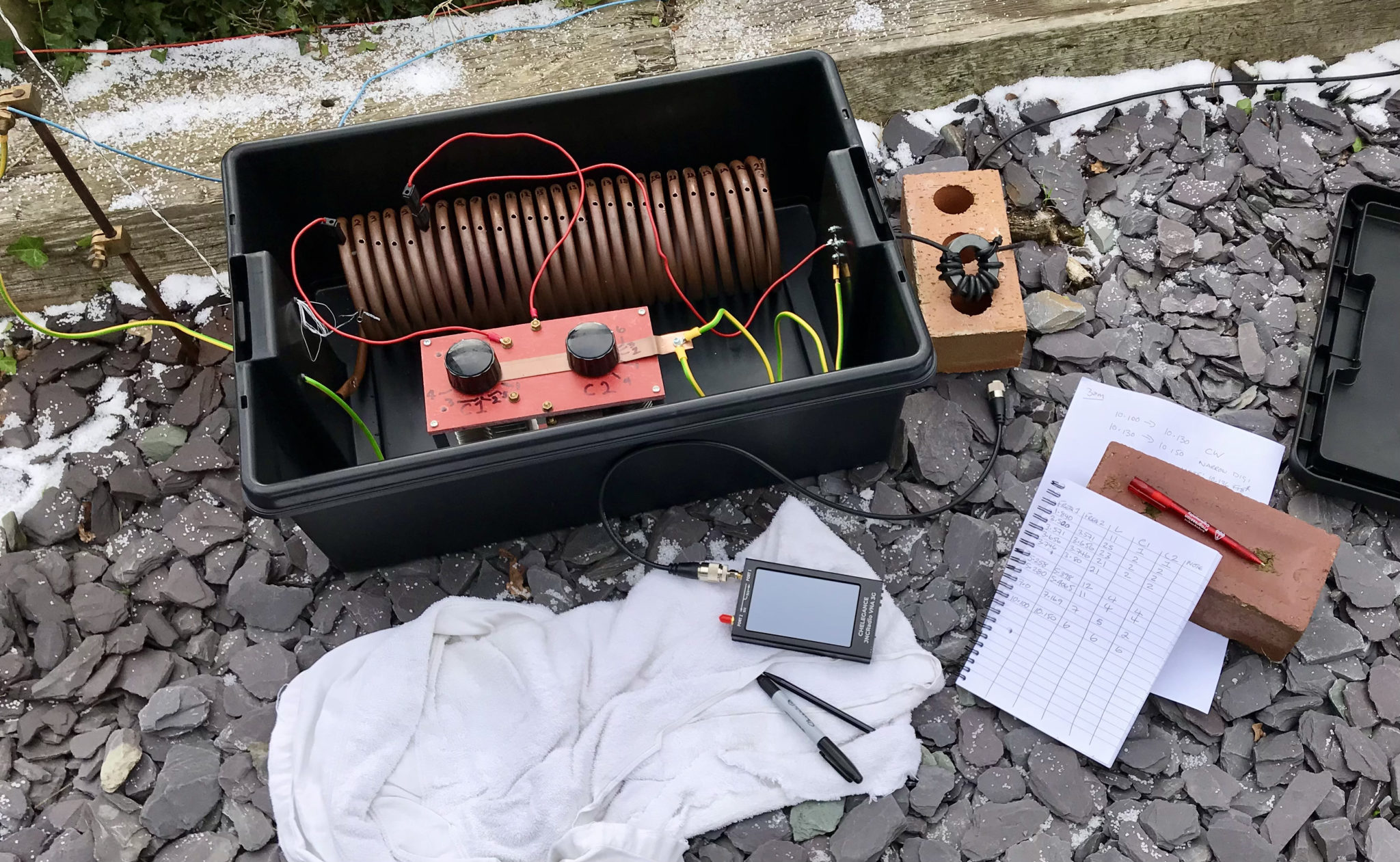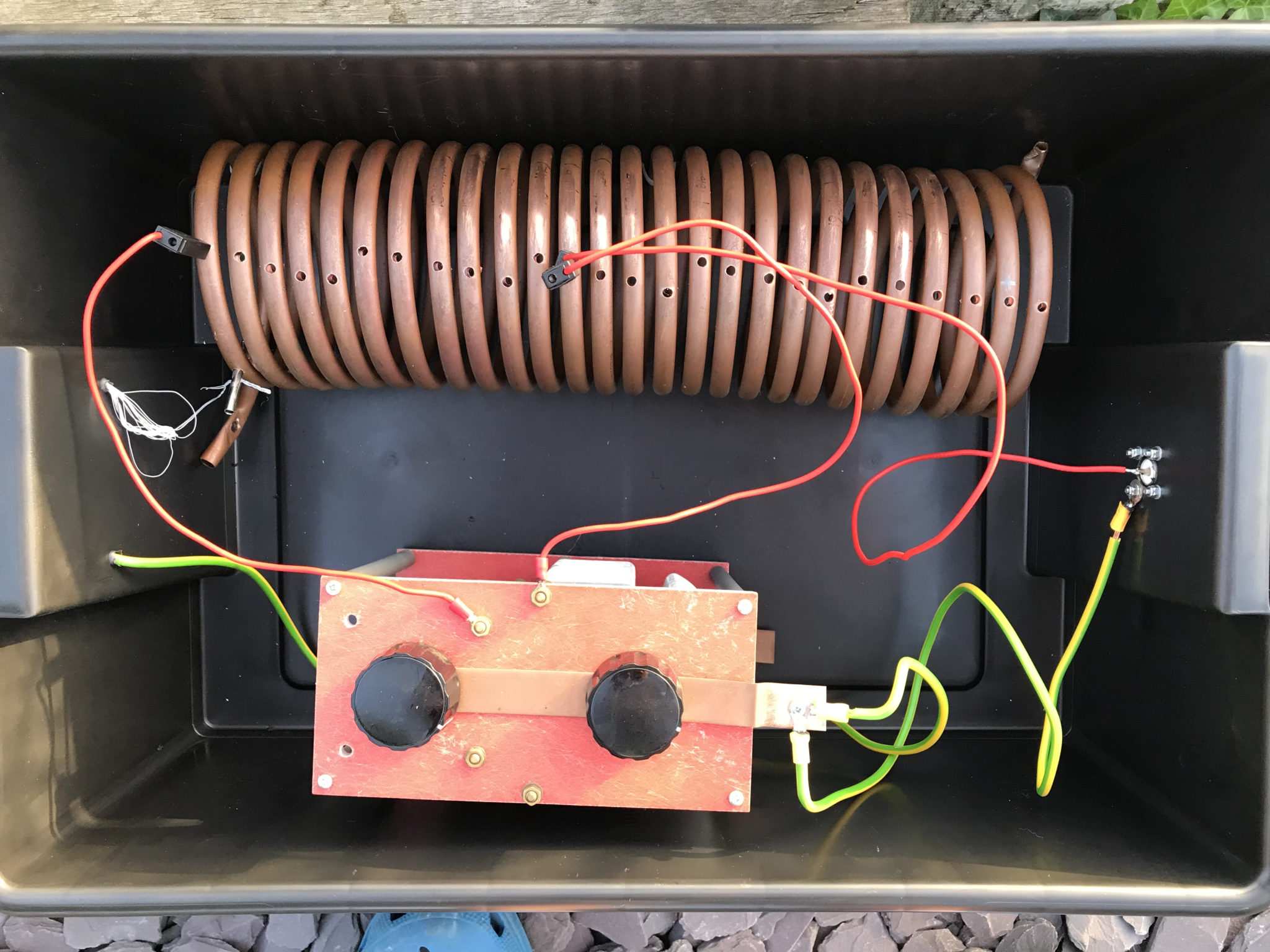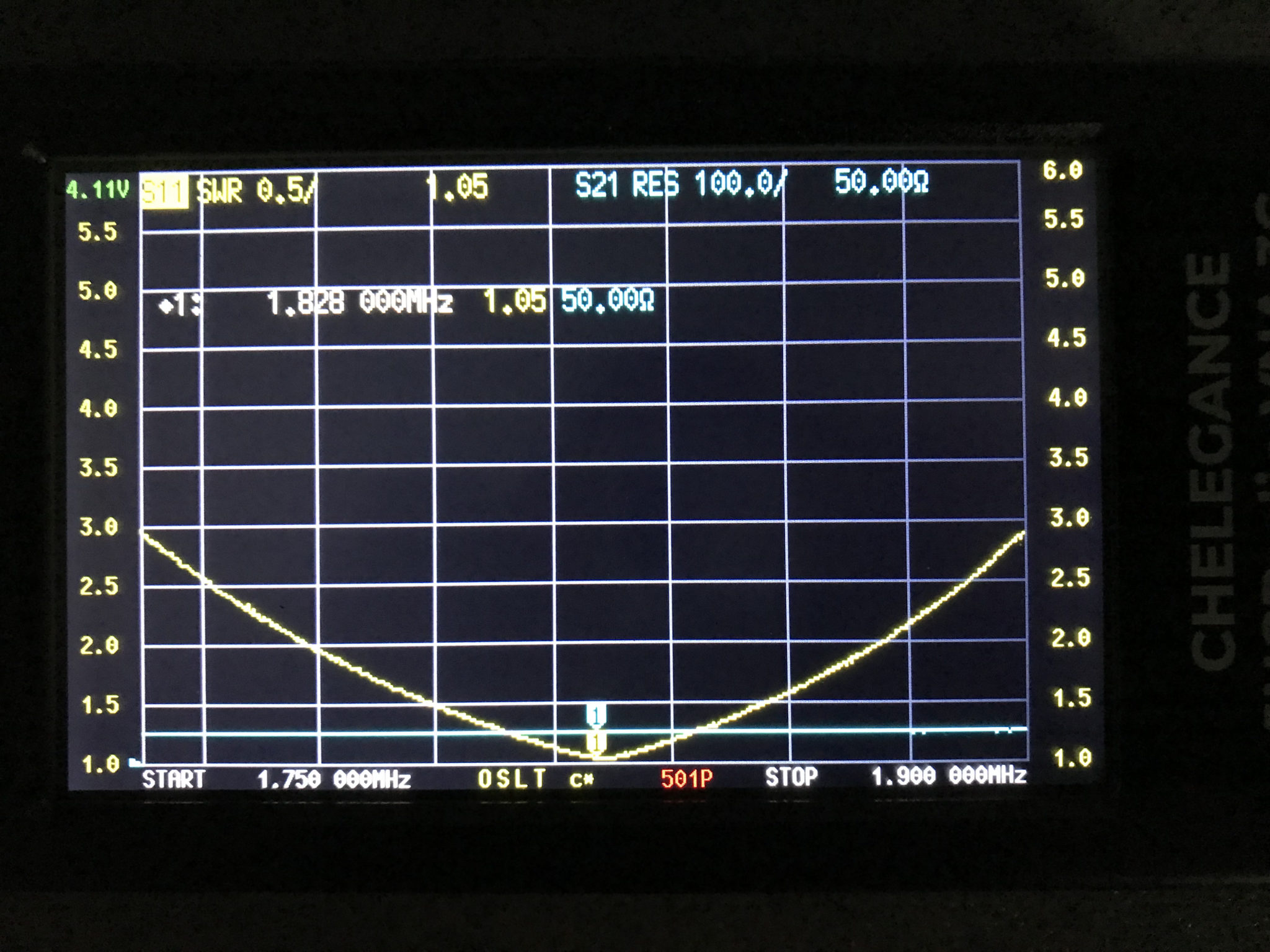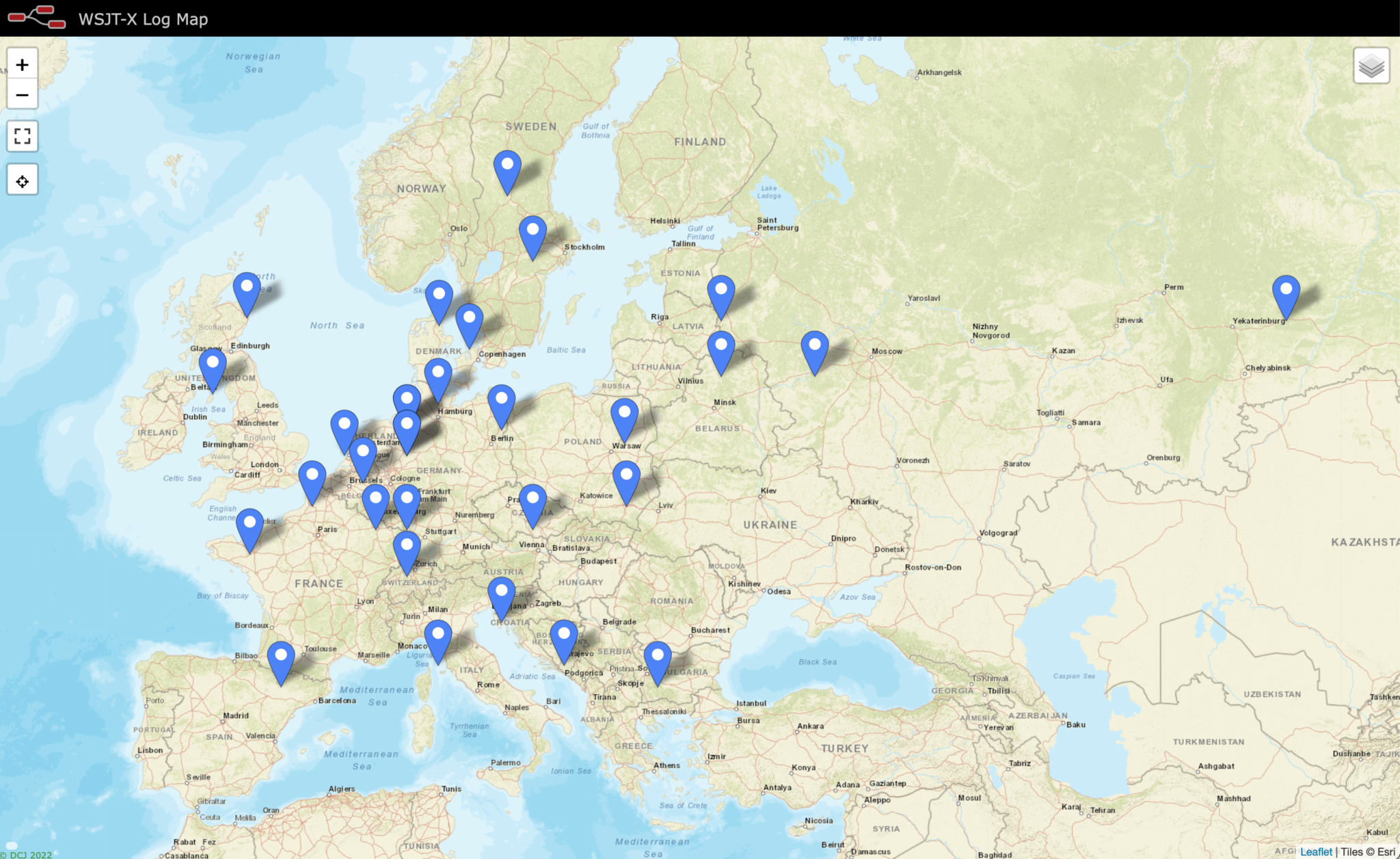This antenna modelling session came about after a conversation with Michael, DK1MI on the Matrix. I believe the antenna design was originally done by Artur, M0PLK with reviews being on EHAM.
The antenna takes the form of a simple inverted triangular loop with a 5.8m flat top and two diagonals each 5.6m long coming down to a point. The antenna is fed in the centre of the flat top with 450 Ohm open ladder line and a 4:1 Balun. This antenna will require an ATU on all bands as the modelling shows a very wide range of impedances at the feed point.

The design seems to suggest using two fixed aluminium tubes with the wire fed up through them for the two diagonal elements of the antenna however, it would probably be easier to use a pair of collapsable fibre glass poles (Not Carbon fibre) with the wire attached via some clips or tape.
I decided to model the antenna with the top horizontal wire 10m above ground putting the point of the triangle 5.2m above ground. I felt this was an achievable height for most HAMs. Lowering the antenna will raise the resultant angle of maximum radiation on all bands.
Looking at the 2D Far Field Plots (2DFFP) the antenna radiates through the loop as expected with a higher radiation angle on the lowest band and the lowest radiation angle on the highest band. The antenna is of course bi-directional and so could be rotated just 180 degrees to obtain global coverage.
On the 30m band the antenna has a very high angle of maximum radiation making it ideal for short distances. There is a little gain to be had at 25 degrees however, this is nowhere near the maximum but, will possibly aid working longer distances. A maximum gain of 5.31dBi is obtained at 72 Degrees on the 30m band.

On the 20m band the 2DFFP is fairly similar to that of the 30m band but, with 5.57dBi gain at a lower angle of 34 Degrees. This will provide excellent results on medium distance contacts and reasonable results on the long haul.

Once above 14Mhz things start to get more interesting. From the 17m band upwards the radiation pattern changes quite drastically and starts to provide some excellent gain at relatively low angles. This will improve the antenna’s DX performance considerably on the higher bands.
Looking at the 17m band the angle of maximum radiation is now down to 26 degrees with a gain of 7.64dBi. At 12 degrees there is a gain of 4.59dBi. This radiation pattern will make this antenna ideal for the medium to long haul contact with very little interference from NVIS signals.

The 15m band follows the trend with the angle of max radiation now down to 22 degrees with a max gain of 8.54dBi. Even at 10 degrees there is a gain of 5.34dBi which will be very welcome for DXing. There is slightly more near vertical incident skywave (NVIS) radiation on the 15m band and so the antenna should provide short, medium and long haul contacts with the latter being favoured.

Moving up to the 12m band the angle of maximum radiation now comes down to 18 degrees with a gain of 8.61dBi. There is also 5dBi of gain to be had at 8 degrees which is ideal for DXing. Unfortunately there is slightly more NVIS radiation on the 12m band than there is on the 15m band. I’m sure with a little change in height this could be reduced such that the antenna provides only low angle radiation.

Finally we reach the 10m band, this is where the antenna has the lowest angle of maximum radiation. With 8.56dBi gain at 16 Degrees, 5.59dBi at 8 degrees and a much reduced NVIS radiation. This antenna should be excellent for the long haul on 28-29Mhz. (It would also make an excellent 11m/CB antenna).

It’s interesting to note the similarities between this multi-band delta loop design and my Bi-Directional Slot Fed Antenna design. They both exhibit very similar radiation patterns and gain figures with the Slot Fed Antenna providing slightly more gain and an even lower angle of maximum radiation on the supported bands.
Overall this easy to construct multi-band delta loop antenna would be ideal for the HAM that just wants a single antenna for 30m and upwards or is looking to go portable. The only disadvantage is that a good Remote Auto ATU is required to provide matching of the antenna to the 50 ohm coax at the feed point. Something like the LDG RT100 would be an ideal ATU choice for this application and would remove the losses caused by having a high SWR on the coax feed to the antenna.
Using an ATU in the radio in the shack isn’t going to provide the same results as the coax cable from the antenna to the shack will become part of the antenna and will be detrimental to the antenna performance. It will also create high losses on the coax feed to the antenna due to high SWR being present over the length of the coaxial feed.







